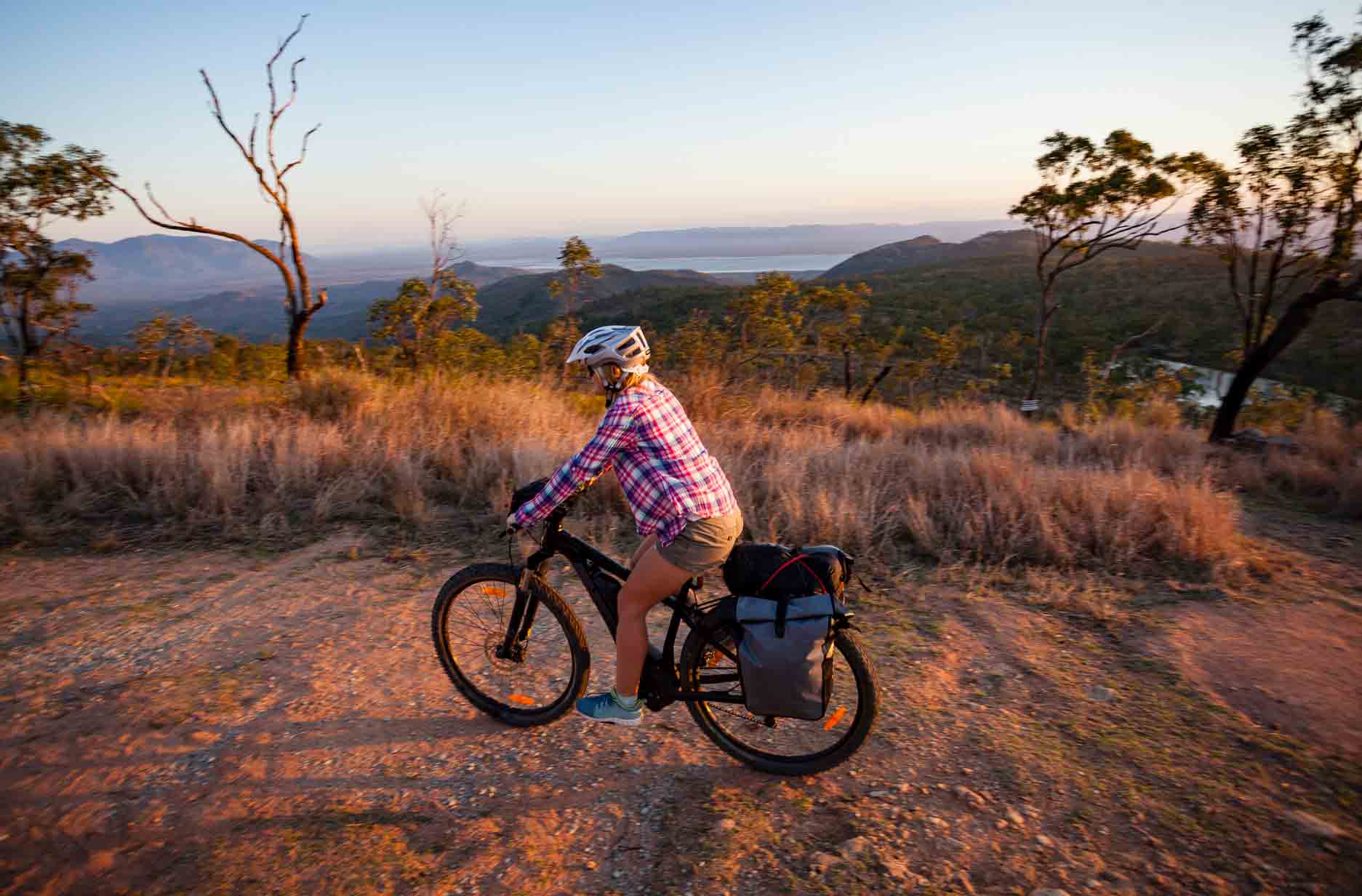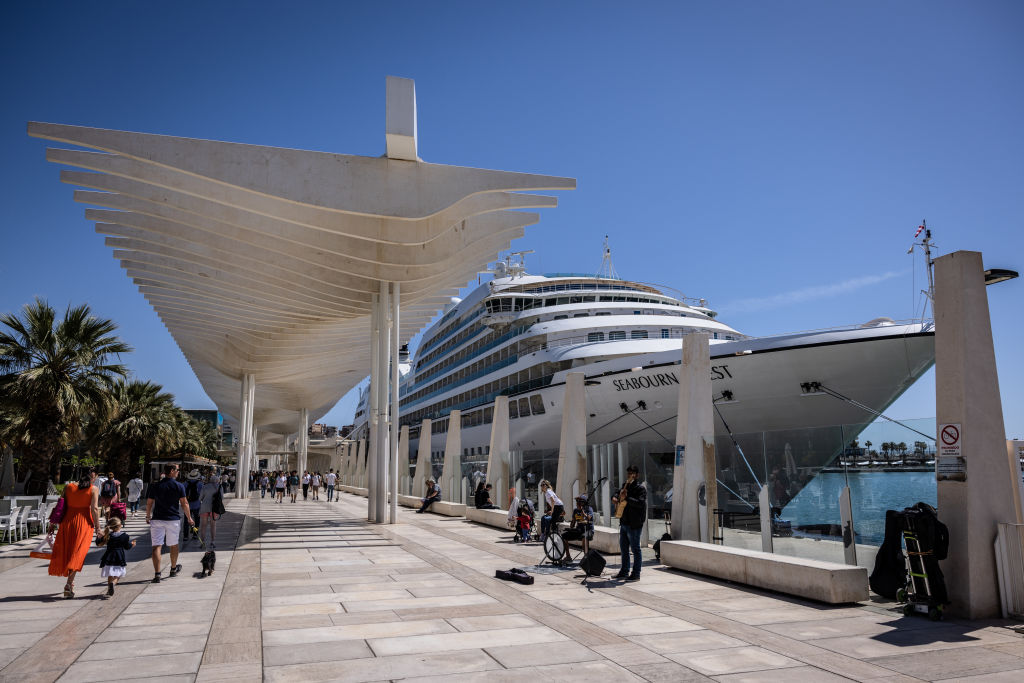Eco-Friendly Tips for Sustainable Trips
Follow these practical tips to minimize the environmental impact of your travel in retirement.


When teenage climate activist Greta Thunberg traveled to New York by sailboat last summer, it wasn’t just younger generations who were with her in spirit. Globetrotters of all ages are looking to minimize the environmental impact of their travels.
In fact, when it comes to choosing sustainable travel options, baby boomers are leading the way, according to a recent survey by Booking.com. Boomers are more likely than Gen X, Millennials or Gen Z to choose environmentally friendly accommodations and modes of transport when booking trips, the survey found.
Across all generations, but particularly among boomers, there’s “a growing awareness about the urgency and impact of climate change, loss of biodiversity, and just in general, unsustainable practices,” says Gregory Miller, executive director of the Center for Responsible Travel.
From just $107.88 $24.99 for Kiplinger Personal Finance
Become a smarter, better informed investor. Subscribe from just $107.88 $24.99, plus get up to 4 Special Issues

Sign up for Kiplinger’s Free Newsletters
Profit and prosper with the best of expert advice on investing, taxes, retirement, personal finance and more - straight to your e-mail.
Profit and prosper with the best of expert advice - straight to your e-mail.
The result: strong consumer demand for “sustainable” travel, which aims to not only protect the planet but also celebrate the culture of each destination and support the local economy, says Jessica Hall Upchurch, sustainability ambassador for travel-agency network Virtuoso. “It’s a balance between all three.”
Sustainable travelers may opt to travel by train rather than plane, book hotels that avoid single-use plastics, and select tour operators that engage with local conservation groups. But the choices aren’t always clear-cut. As more travel industry players seek to style themselves as “sustainable,” it can be tough for consumers to separate the marketing fluff from the serious sustainability initiatives.
“There’s a lot of buzz around travelers wanting to travel sustainably and consciously, but they don’t know how to do it,” says Jessica Blotter, chief executive officer and co-founder of socially conscious hotel booking platform Kind Traveler. “Hotels, tourist boards, airlines, everyone is scrambling to figure out what sustainable travel looks like for them.”
The focus on sustainability comes amid growing concern about overtourism. Due in part to a strong economy and cheap air travel, there were 1.4 billion international tourist arrivals worldwide in 2018, up 6% from a year earlier, according to the United Nations World Tourism Organization. All that coming and going can lead to environmental damage, overcrowding and overdevelopment.
Some in the industry are skeptical that sustainable travel can completely avoid such consequences. “Sustainable is a nice name for it, but I’m not sure any of it is truly sustainable,” says Ged Caddick, president and chief executive officer of Terra Incognita Ecotours. “It’s more about how you can minimize the impact.”
Here are four key steps that can help travelers tread more lightly.
Avoid the Bucket-List Mentality
Yes, many retirees have worked long and hard to cross every destination off their bucket list—but those who want to travel sustainably should avoid a check-the-box approach to destinations. “Some people just want to go to as many places as they can as fast as they can and take pictures and say ‘I’ve been to x, y and z,’ ” Miller says. That doesn’t leave much time to learn about a destination’s social and environmental problems or engage with local communities.
Kind Traveler, launched in 2016, adds another twist to the sustainable hotel hunt: In addition to highlighting greener accommodations, the company encourages travelers to positively impact the destinations they visit. Users get access to special rates—typically 10% to 15% off the hotel’s best available rate—when they give $10 to a local charity, Blotter says. A user booking the Farmhouse Inn in Sonoma, Calif., for example, might be encouraged to donate to Redwood Empire Food Bank, a local charity that provides meals to people in need. (Users can also choose to donate to any of the charities on the platform, rather than the suggested local charity, Blotter says.)
Choose More Sustainable Tour Operators
When booking a tour, consider whether the operator is minimizing waste, forming partnerships with local conservation groups, and using local providers for restaurants, transport and accommodations—ensuring that the local community benefits from tourism.
Terra Incognita Ecotours, for example, arranges for travelers to meet the staff of a conservation group in each destination, which “adds a level of appreciation and understanding,” Caddick says. Many travelers continue to support those groups when the tour is over, he says.
G Adventures is taking numerous steps to become more sustainable. The company is reducing the use of single-use plastics on its tours, and its nonprofit partner, Planeterra Foundation, supports social enterprises in destination communities, McCaffery says. And in 2018, G Adventures launched the “Ripple Score,” which shows travelers how much of the money spent on each tour’s accommodations, transport, restaurants and other service components stays in the local communities. The company works to improve these scores by using more local services on its tours, McCaffery says.
Go With Greener Modes of Transport
Growth in air travel means that by 2050, aviation could consume about one-fourth of the world’s “carbon budget”—the maximum level of carbon dioxide emissions that could keep global temperatures within 1.5 degrees Celsius of preindustrial levels, according to a recent analysis by Carbon Brief.
Yet some in the sustainable travel industry say that air travel is still justified. “An educated traveler—someone who has been and seen the issues facing some of these places—is an offset to the environmental costs of traveling,” Caddick says. “I hope it creates activists who fight for the protection and preservation of these places as opposed to just going and exploiting them.”
That said, there are ways to reduce the environmental impact of flying. “Always try to find direct flights as opposed to a lot of hedge-hopping,” Miller says. “That really reduces your greenhouse gas footprint.” Staying for a longer period at your destination can also “make travel count,” McCaffery says, and reduce the number of flights you take per year.
Air travelers can purchase carbon offsets, which support emissions-reducing or sustainable-energy projects. Miller recommends carbon-offset programs that are run by nonprofit organizations, such as Cool Effect or CarbonFund.org.
Another option: Stay closer to home and travel by foot, bike, sailboat or electric vehicle. Stacy does a lot of backpacking around her home state of Washington, and “you can’t get much more sustainable than that,” she says.
Profit and prosper with the best of Kiplinger's advice on investing, taxes, retirement, personal finance and much more. Delivered daily. Enter your email in the box and click Sign Me Up.

-
 Dow, S&P 500 Rise to New Closing Highs: Stock Market Today
Dow, S&P 500 Rise to New Closing Highs: Stock Market TodayWill President Donald Trump match his Monroe Doctrine gambit with a new Marshall Plan for Venezuela?
-
 States That Tax Social Security Benefits in 2026
States That Tax Social Security Benefits in 2026Retirement Tax Not all retirees who live in states that tax Social Security benefits have to pay state income taxes. Will your benefits be taxed?
-
 QUIZ: What Type Of Retirement Spender Are You?
QUIZ: What Type Of Retirement Spender Are You?Quiz What is your retirement spending style? Find out with this quick quiz.
-
 9 Types of Insurance You Probably Don't Need
9 Types of Insurance You Probably Don't NeedFinancial Planning If you're paying for these types of insurance, you may be wasting your money. Here's what you need to know.
-
 Why It's Worth Booking a Winter Vacation
Why It's Worth Booking a Winter VacationTravel Smart In the early months of the year, travel demand dips — and so do prices.
-
 5 Ways to Save on a Trip to the 2026 Olympics in Italy
5 Ways to Save on a Trip to the 2026 Olympics in ItalyA guide to going to the Milan-Cortina 2026 Winter Olympics without breaking the bank.
-
 The Best (and Worst) Airlines for Flight Delays and Cancellations
The Best (and Worst) Airlines for Flight Delays and CancellationsWhich airlines should you book and which should you avoid if you want to make it to your destination on time?
-
 Four Luxury Spa Resorts for Well-Heeled Travelers
Four Luxury Spa Resorts for Well-Heeled TravelersWe hand-picked these U.S. luxury spa resorts for their serenity, amenities and dedication to the comfort of older travelers.
-
 Child-Free Cruises Perfect For Your Retirement Celebration
Child-Free Cruises Perfect For Your Retirement CelebrationHow to find a bespoke ocean or river vacation for adults. Many of these options are smaller, charming river cruises, expeditions, or niche experiences.
-
 Noctourism: The New Travel Trend For Your Next Trip
Noctourism: The New Travel Trend For Your Next Trip"Noctourism" is a new trend of building travel and vacations around events and plans that take place at night. Take a look at some inspiring noctourism ideas.
-
 My Husband and I Retired at 67 With $3.2 Million, But He's Frugal About Travel. How Can I Convince Him to Loosen Up?
My Husband and I Retired at 67 With $3.2 Million, But He's Frugal About Travel. How Can I Convince Him to Loosen Up?We asked financial planning experts for advice.